| Title | The development of aperiodic neural activity in the human brain. |
| Publication Type | Journal Article |
| Year of Publication | 2024 |
| Authors | Cross, ZR, Gray, SM, Dede, AJO, Rivera, YM, Yin, Q, Vahidi, P, Rau, EMB, Cyr, C, Holubecki, AM, Asano, E, Lin, JJ, McManus, OKim, Sattar, S, Saez, I, Girgis, F, King-Stephens, D, Weber, PB, Laxer, KD, Schuele, SU, Rosenow, JM, Wu, JY, Lam, SK, Raskin, JS, Chang, EF, Shaikhouni, A, Brunner, P, Roland, JL, Braga, RM, Knight, RT, Ofen, N, Johnson, EL |
| Journal | bioRxiv |
| Date Published | 2024 Nov 09 |
| ISSN | 2692-8205 |
| Abstract | The neurophysiological mechanisms supporting brain maturation are fundamental to attention and memory capacity across the lifespan. Human brain regions develop at different rates, with many regions developing into the third and fourth decades of life. Here, in this preregistered study (https://osf.io/gsru7), we analyzed intracranial EEG (iEEG) recordings from widespread brain regions in a large developmental cohort. Using task-based (i.e., attention to-be-remembered visual stimuli) and task-free (resting-state) data from 101 children and adults (5.93 - 54.00 years, 63 males; electrodes = 5691), we mapped aperiodic (1/ƒ-like) activity, a proxy of excitation:inhibition (E:I) balance with steeper slopes indexing inhibition and flatter slopes indexing excitation. We reveal that aperiodic slopes flatten with age into young adulthood in both association and sensorimotor cortices, challenging models of early sensorimotor development based on brain structure. In prefrontal cortex (PFC), attentional state modulated age effects, revealing steeper task-based than task-free slopes in adults and the opposite in children, consistent with the development of cognitive control. Age-related differences in task-based slopes also explained age-related gains in memory performance, linking the development of PFC cognitive control to the development of memory. Last, with additional structural imaging measures, we reveal that age-related differences in gray matter volume are differentially associated with aperiodic slopes in association and sensorimotor cortices. Our findings establish developmental trajectories of aperiodic activity in localized brain regions and illuminate the development of PFC inhibitory control during adolescence in the development of attention and memory. |
| DOI | 10.1101/2024.11.08.622714 |
| Alternate Journal | bioRxiv |
| PubMed ID | 39574667 |
| PubMed Central ID | PMC11581045 |
| Grant List | P30 AG013854 / AG / NIA NIH HHS / United States R01 NS021135 / NS / NINDS NIH HHS / United States R00 MH117226 / MH / NIMH NIH HHS / United States R00 NS115918 / NS / NINDS NIH HHS / United States P41 EB018783 / EB / NIBIB NIH HHS / United States T32 MH067564 / MH / NIMH NIH HHS / United States R01 MH107512 / MH / NIMH NIH HHS / United States |

